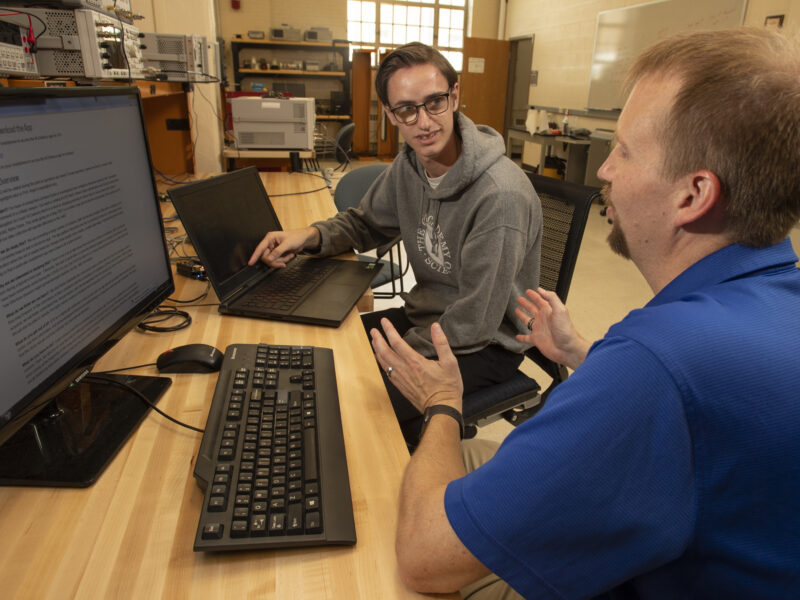N-Distance – Mapping Interpersonal Interactions to limit the spread of COVID-19

Principal Investigator: Professor Striegel
AWaRE REU Researcher: Christopher Ferguson, Trine University
Other Contributor: Stephen Mattingly
Project Summary:
Beyond serving as an essential part of connectivity for our various smart devices, WiFi also can be helpful in providing environmental context such as the likely presence of people using devices, the density of devices being used, and changes in the nearby environment. The focus of this project is to explore the extent to which vehicle-mounted WiFi sensing could help better discern important environmental cues that are of interest to researchers and government entities.
Finding:
One way of limiting the spread of the ongoing COVID-19 pandemic is reducing contact between infected and uninfected individuals. “Contact tracing”, in which people provide a summary of interpersonal interactions via clinician interview, allows authorities to monitor the spread of the disease. Using this information, authorities can inform individuals of their possible exposure, allowing them to restrict their interactions and avoid further spread.
The N-Distance project aims to create a system using passive and privacy sensitive sensors to achieve a similar effect for a localized area, such as a college campus. This information is utilized in a visual format to allow easy identification of areas that have a high risk of spreading disease based on proximity between individuals, and to identify these patterns historically and in real time, allowing for timely intervention by college officials. In addition, this tool provides individuals the ability to assess risk and modify behavior accordingly, e.g. seeking out a less crowded area to study in.
This system is based on phone location and Bluetooth sighting data gathered from participants who install an app and carry a beacon. By collecting this data, the N-Distance system is able to generate a heatmap of roughly when and where interactions occur on campus. Because data is collected passively and with an emphasis on privacy, the system may reduce the need for self-reporting that may interfere with privacy.

